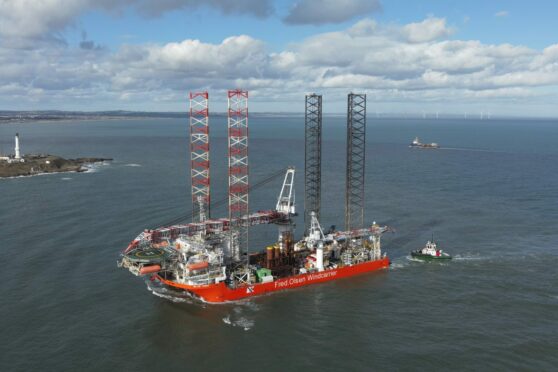Aberdeen South Harbour is set to be completed soon, accommodating larger cruise vessels and opening up more opportunities for offshore projects.
-
Some Press and Journal online content is funded by outside parties. The revenue from this helps to sustain our independent news gathering. You will always know if you are reading paid-for material as it will be clearly labelled as “Partnership” on the site and on social media channels.
This can take two different forms.
“Presented by”
This means the content has been paid for and produced by the named advertiser.
“In partnership with”
This means the content has been paid for and approved by the named advertiser but written and edited by our own commercial content team.
Port of Aberdeen is entering a new era in its almost 900 years of history, as construction of Aberdeen South Harbour nears completion.
South Harbour is transformational – not just for Port of Aberdeen, but for the region and the nation.
The £400 million expansion project, largely self-funded by the port, is the largest marine infrastructure project in the UK.
The available berths have been heavily utilised by vessels supporting oil and gas, renewables and general cargo operations. Once construction is completed in Q2 2023, Aberdeen will be the largest berthage port in Scotland.
The new facility, next to the Energy Transition Zone, accommodates larger, wider, and deeper vessels and is ideally suited for space-intensive projects and industries, such as offshore wind and decommissioning.
These types of vessels and project activity, such as the Noble Innovator special periodic survey, would have previously sailed past the city, often destined for a European port, capable of handling their requirements.
Roddy James, Chief Commercial Officer, Port of Aberdeen, said: “Aberdeen is one of the UK’s busiest ports and we are a vital part of the North Sea oil and gas supply chain. Thousands of vessels visit every year and most of these come in for a crew change or to pick-up equipment for a platform, then are out of the port again quickly.
“With South Harbour, we can now offer more deep berths and expansive quayside space for longer durations. We’re attracting different markets, such as vessel maintenance and lay-ups, that we were never able to capture before.”
South Harbour will also welcome larger cruise vessels into Aberdeen, helping to unlock the city and shire as a cruise tourist destination, and is already attracting new and far larger volumes of general cargo than was previously possible.
This increased activity supports local jobs, attracts local supply chain spend and investment, and the profits are reinvested back into the port to improve the facilities for future generations.
One industry in particular – offshore wind – has the potential to unleash economic growth for the region not seen since the oil boom of the 70s.
Growth opportunities in offshore wind seen
Port of Aberdeen has welcomed more than 100 vessels working on offshore projects so far this year, including the latest arrival of the Blue Tern jack-up installation vessel.
The Fred. Olsen Windcarrier vessel, which has an overall length of 151 metres, a breadth of 50 metres and an 800-tonne crane, couldn’t be missed as it sailed into Aberdeen South Harbour in March.
The port has supported wind developments for many years, and its North Harbour is the operations and maintenance (O&M) base for Aberdeen Offshore Wind Farm and Kincardine Offshore Floating Wind Farm.
Aberdeen is increasingly an attractive location for a wide range of offshore wind project vessels, including large cable layers, construction, installation, survey and service operation vessels, due to its strategic location, world-class infrastructure, and access to an unrivalled supply chain. Many of the vessels working on windfarms such as Seagreen, Moray East and Moray West now regularly call at the port.
South Harbour offers 1.5km of deepwater berths (9 to 15 metres deep) and can accommodate ships up to 300 metres in length. It also offers extensive heavy-lift zones, 125,000m2 of flexible laydown space at the quayside and expansive project areas.
The combined quayside – across North and South Harbours – spans almost 8km and moves the port into the wind farm installation space, as well as its traditional O&M offering.
Mr James continued: “Offshore wind is our most significant opportunity for growth over the next decade. The sector currently accounts for 10% of our overall vessel traffic and with ScotWind, INTOG and other developments on the horizon, we expect that figure to increase significantly in the coming years.
“Our £400 million investment in Aberdeen South Harbour positions the expanded port, and wider north east supply chain, to play a pivotal role in Scotland’s next generation of offshore wind. We’re engaging across industry and government to understand what’s required from ports to support these projects and discuss how the expanded Port of Aberdeen can unlock value across the offshore wind lifecycle.”
Port of Aberdeen provides an integrated logistics and services hub to its customers. Find out more from Port of Aberdeen’s website.
